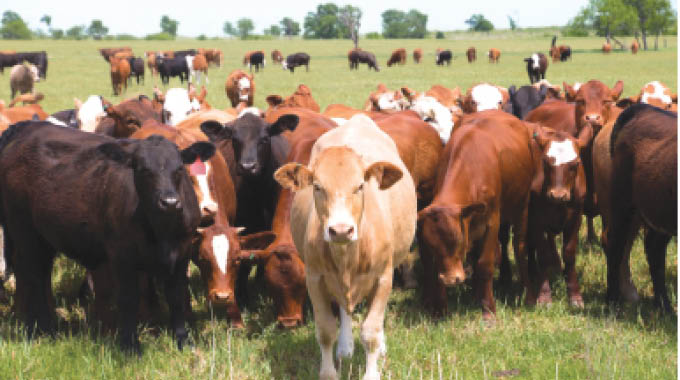
The Sunday News

ONE characteristic and perhaps disadvantage of communal livestock production systems is the uncontrolled nature of all fundamentals of production.
The grazing is largely haphazard, mating is random as different herds mix in the veld.
The result of this uncontrolled production system is that the rangeland itself is not properly managed as animals graze from every direction in any format.
Admittedly in some communal areas there are some weak by-laws meant to regulate utilisation of different sections of the rangeland at different times of the year.
Usually the riverine ecosystem is closed for grazing at certain times of the year and only open during the dry season.
However, not everyone obeys these by-laws and hence places which would have been reserved for later use get depleted before time comes.
Then we have uncontrolled mating because cows are always running with the bulls.
The mating is uncontrolled in that manner but in strict terms the mating is self-controlled by the nutritional conditions of the veld. We have discussed many times before that when the nutritional status is bad and subsequently the condition of the animals, they don’t go into breeding.
So the majority of animals will breed around February after the rains began in early December. At that time, they will be in condition to go into breeding. This means your calving season will be right at the peak of the dry season in October.
So you are in the deep end of the dry season and your cows are dropping calves, your veld is almost non-existent, the burden of looking after the lactating animals will overshadow the joy of receiving calves.
If our mating system among the smallholder livestock farmers was controlled, we could hold on to breed our animals in February even though the condition will be allowing that. We would then breed them towards the end of March so that they will drop calves in December during which the rainy season will have begun and the veld will be able to sustain lactating cows without demanding to be supplemented.
Livestock farmers with private pieces of land are able to control these important production parameters such as regulated utilisation of the veld which means it can last until the end of the year, controlled mating which means cows will drop calves at the right time of the year when the rainy season has begun.
Besides nutritional status of the veld, calving during the peak of the dry season for communal smallholder farmers means a lot of cows give birth in the veld with no one monitoring as animals are not herded during that time of the year.
So, as boys go to check the animals if they are okay in the veld after two weeks, they find that cow now nursing a two week old calf. While this is good news to the farmer, a lot of things could have gone wrong during this unsupervised calving down period.
Suppose the cow needed to be assisted because the calf was not properly presented for a normal birth, both the dam and the calf would die of complications of dystocia without anyone noticing. Secondly, what if the cow’s teats are blocked and the milk is not coming?
This means you would find the calf dead from starvation as it fails to nurse from the dam.
Suppose the calf has a poor or weak suckling reflex, it would also starve to death as it fails to nurse from the dam.
Both these scenarios could find help if animals calve down under supervision, something which happens during the cropping season as animals are herded all the time to avoid them straying into crop fields.
So if your animals are bred in such a manner that they will drop calves during the period when animals are always herded in the veld, it means your stockman will notice any situation that needs intervention and raise alarm in time to save the situation.
I am aware that what am suggesting is very difficult and almost impossible in a communal set up, but I feel it is still important for me to make farmers understand what they could benefit if they tweaked the system a bit.
The how part might not be domain! At minimum if your animals breed in such a manner that they will drop calves in October, you better buy stock feed and hay bales in June and stock up so that are able to supplement the lactating animals.
Uyabonga umntakaMaKhumalo.
Mhlupheki Dube is a livestock specialist and farmer. He writes in his own capacity.
Feedback [email protected] <mailto:[email protected]> cell 0772851275



